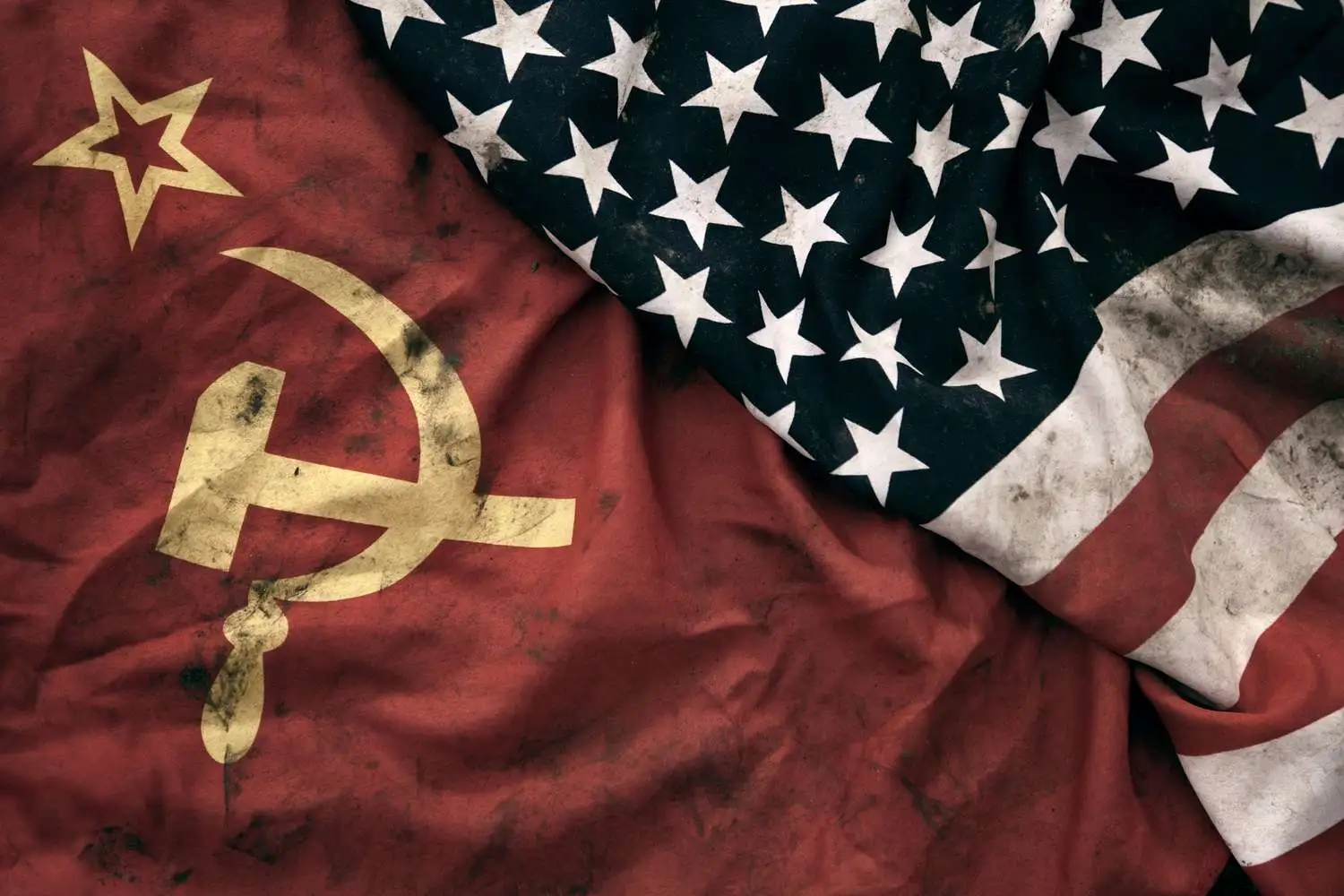Two former allies during the first and second world wars allegedly become enemies due to suspicion and a fight for superiority. The Cold War, which spanned from the end of World War II until the early 1990s, was characterized by intense tensions and rivalries between the Soviet Union and the United States rather than conventional warfare. These two superpowers aimed to advance their ideologies and prevent their adversary from spreading their politics and economic values around the globe. Despite the conflict never escalating into full-scale warfare, the rivalry between the United States and the Soviet Union led to the development of new modes of weaponry, including intimidating propaganda, a race to arm and technologically innovate, and creating new alliances.
Propaganda and intimidation were crucial elements of the Cold War. With both the Soviet Union and the United States leveraging mass media to advance their ideologies, they spread fear about their opponent to their own citizens. This fear helped develop strong feelings against the opposition bloc. According to an article published by Michael Barson in 1992, nearly four million copies of the first postwar comic of the Russians conquering and enslaving America published in 1947 titled “Is This Tomorrow: America Under Communism” were sold. This shows that such type of propaganda was widely circulated in the United States, hoping to raise awareness of a communist threat. It was also likely that such propaganda was utilized to justify the extensive shift of America’s foreign policy from isolationism to containment. Moreover, politicians in those days often utilized public speech to spread fear about their adversaries. One notable example was when then-President Harry S. Truman delivered a speech to Congress. It was also known as the Truman Doctrine. He suggested that “it must be the policy of the United States to support free peoples who are resisting attempted subjugation by armed minorities or by outside pressures”, adding that “[communism] relies upon terror and oppression”. It is believed that the ultimate goal of these possibly exaggerated speeches was to plant the seeds of intimidation in people, as well as to secure public support for increased military spending and swift change in foreign policy. Without the circulation of propaganda and the use of intimidating speeches, both superpowers would unlikely have been able to justify their actions. Hence, propaganda and intimidation were seen almost everywhere during the Cold War era.
The two superpowers were also very eager to boost their development of weapons and technology. The Soviet Union and the United States stockpiled nuclear warheads and Intercontinental Ballistic Missiles, with such number skyrocketing from close to none in 1960 and more than 4500 warheads in 1977, according to the National Resource Defense Council, a non-profit international environmental advocacy group headquartered in New York City. These newly developed weapons had the capability of reaching any target in each other’s territory and were virtually immune to defensive measures. The arms race escalated a potential war and intensified tension. However, the threat of “mutually assured destruction” created a complicated geopolitical atmosphere filled with uncertainty, deterring both sides from actually using their weapons. Thus, this helped to prevent a full-scale conflict between the two superpowers. Both superpowers also advanced in technology during the space race, a competition between Russia and the United States to advance their space exploration programs. On September 13, 1962, then-President John F. Kennedy delivered a speech where he stated, “Some 40 [satellites] were made in the United States of America and they were far more sophisticated and supplied far more knowledge to the people of the world than those of the Soviet Union”. NASA, an independent agency of the United States federal government responsible for the civil space program, aeronautics research, and space research, spent approximately $23 billion on manned programs from 1961 to July 1969. Compared to the United States, the Soviet Union’s manned space program was less than 50 percent of NASA’s budget. The arms and space race undoubtedly had a profound impact on the global economy, as both superpowers were forced to spend vast resources on military spending and space programs. Both the Soviet Union and the United States were also distracted from preventing their adversary from spreading in the world and shifted their priorities to competing to be the world’s top superpower in various aspects such as technology and space programs, thus also possibly deescalated the risk of a full-scale military conflict.
Treaties and alliances played a significant role in the Cold War in shaping international relations. These two superpowers sought to expand their economic and political influence to establish their superiority. The United States first established the North Atlantic Treaty Organization in 1949, an alliance of Western democracies that aimed to promote peace and foster cooperation among its member countries. The Soviet Union and its affiliated Communist nations in Eastern Europe responded by founding the Warsaw Pact in 1955. It was believed that it could strengthen the Soviet’s control over the other participating countries. These two alliances formed an “iron curtain”, which was a phrase first coined by former United Kingdom Prime Minister Winston Churchill in March 1946. It was a literal political division of the European continent. These alliances provided means of exerting influence on the global stage and gaining a strategic advantage in ensuring their economic and political systems remained dominant. In addition to the military alliances of Western capitalist countries, there were also many treaties signed in Asia, like the Southeast Asia Treaty Organization in 1954 and Sino-American Joint Communique in 1979 to strengthen the relationship between the United States and other Asia countries, especially China. The Sino-American Joint Communique stated that “The United States of America recognizes the Government of the People’s Republic of China as the sole legal Government of China […] Both [countries] wish to reduce the danger of international military conflict and each is opposed to efforts by any other country or group countries to establish such hegemony”. Prior to the signing of the Sino-American Joint Communique, the Chinese and the Soviet governments decided to break their political relations due to ideological and territorial issues. It significantly impacted and weakened the communist bloc, as the Soviet Union could no longer rely on its former biggest ally. This causes the Soviet Union to be even more isolated from the international community and could further discourage the Soviet Union from engaging in actual military conflicts. Therefore, treaties and alliances in one way stirred up tension, but in another way, they contributed to the normalization of relations throughout the world, thus, played a significant role in forming the complex geopolitical landscape during the Cold War period.
Although the Cold War never escalated into full-scale warfare, the conflict was mainly characterized by intense tensions and rivalries between the Soviet Union and the United States, leading to the development of new modes of weaponry, including propaganda and intimidation, arms and technology race, and treaties and alliances. All these tactics were important in shaping the course of the conflict, influencing public opinion, and determining the balance of power between the two superpowers. The legacy of the Cold War continues to shape the world today, impacting international relations, military strategy, and the global economy.
 BlogPost
BlogPost